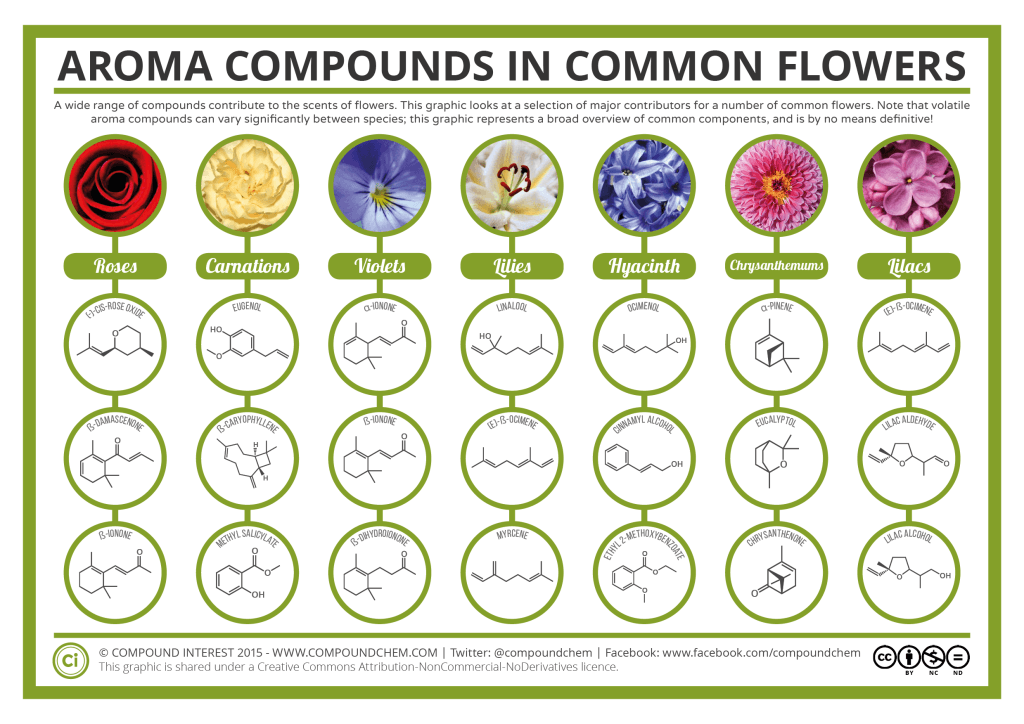Despite the chill in the air here at Asynt HQ, we’re determined to embrace the official start of Spring!
This means lots of things to lots of people; for me personally it’s a chance to embrace the outdoors – whether messing around with motorbikes and classic cars or tending our little patch of garden on the edge of the river Cam! (For many of my colleagues I suspect it’s means more about embracing the abundance of chocolate in the shops – or in our #AsyntChemistry giveaway!).
Despite my lack of laboratory experience or chemistry knowledge (unlike our amazing sales team) I often get curious about the relative chemistry for the time of year and any big events on the calendar and with the sweet smell of flowers starting to tease my nose I wanted to find out why each blooms scent is so different.
The writers at Compound Interest were one step ahead of me having touched on this very topic for Valentine’s Day last month:
“Hyacinth
Three compounds are particular contributors to the scent of hyacinth. Ocimenol has a scent described as fresh and citrusy, whilst cinnamyl alcohol has a balsamic odour – its name is derived from the fact that it also occurs in cinnamon. Another compound, ethyl 2-methoxybenzoate, adds a floral, fruity aspect to the scent.”
“Lilacs
Lilacs are another flower which lend their name to the chemical compounds that their aroma contains. Whilst (E)-beta-ocimene is the major component of their fragrance, it is also contributed to by lilac aldehyde and lilac alcohol. Like rose oxide, both of these compounds have a number of different isomers, with varying impacts on the overall scent of the flowers. Benzyl methyl ether also has a significant impact on their scent when they are in full bloom, contributing a fruity odour.”
“Violets
Violets are perhaps less common in bouquets, but perhaps much more interesting than some others from an aroma perspective. Their scent is primarily caused by the presence of compounds called ionones, of which there are a range of forms with subtly different structures. On the face of it, this might not seem that interesting – but these ionones have a peculiar interaction with our olfactory receptors.
We become accustomed to most persistent smells, as our brain registers them as constants and phases them out. This is why you can get used to the smell of a perfume, to the extent that you no longer notice it. This is where the ionones in violets’ aroma differ. They essentially short-circuit our sense of smell, binding to the receptors and temporarily desensitising them. As this shut-down is only temporary, the ionones can soon be detected again, and are registered as a new smell. Consequently, the scent of the violet appears to disappear – then reappear!”
An additional article on this can be found HERE – I loved the description: How Violets Steal Your Sense of Smell
“Other Flowers
There are, of course, numerous other varieties of flowers which aren’t featured here. In an attempt to pre-empt the “what about [insert flower name here]?” queries, it’s worth pointing out that the research available on the aromas of some flowers is quite sparse. In particular, it would have been great to include tulips in the graphic, but information on their aroma composition was hard to come by!
It’s also worth reiterating that this graphic is merely meant to provide a general representation. There’s a lot a variation in the precise concentration of chemicals between different species, so this is really only intended as a rough guide. There are some species of rose, for instance, which have little or no aroma to speak of! This just serves to emphasise the fact that aroma chemistry can be quite complex (but fascinating) stuff.”
With my abundance of allergies and intolerances, in addition to considering how what I consider just the smell of some flowers particularly irritates my eyes and nose, it’s reassuring to know just how different the chemical content of the blooms around me are – nice to know it’s not all in my mind that some are affecting me more than others!





